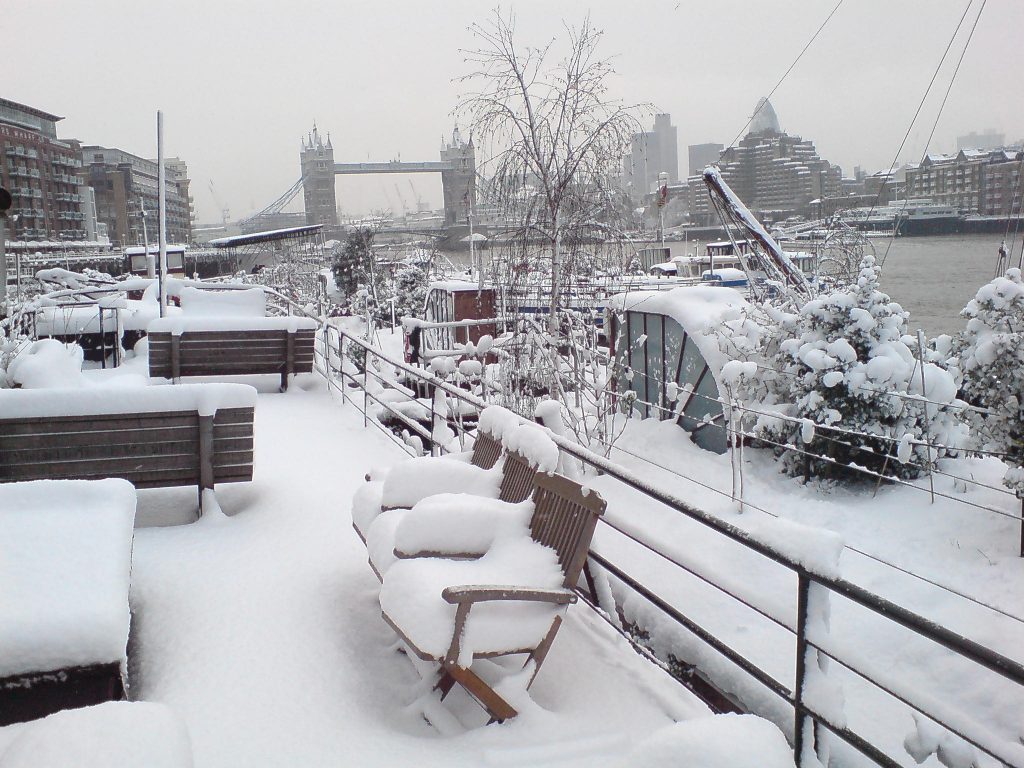Elaine first came to the moorings where she lived for a several years to look after the unique gardens that were there. The series of seven 23m floating barge gardens at Downings Road Moorings in London, SE1, were devised by architect and moorings owner, Nick Lacey. The gardens have community value as the beautiful living walkways that link the various barges on the moorings together. Horticulturally they are fascinating as living (and floating) roofs, which demonstrate that it is possible to grow a mature garden in relatively little soil (not more than 30cm). They are also valuable to nature by providing habitat for a range of wildlife including marine and land based birds, pollinators and other insects and invertebrates.




Collectively the gardens contribute to the unique personality of the moorings. They are much valued by the residents as well as by the wider public who have the opportunity to visit the gardens several times a year during open garden days. Walking through a mature garden in the middle of the Thames is a remarkable experience, which inspires people time and time again to see the world through new eyes.



The gardens are managed organically with no pesticide or herbicide chemicals. They are fed with home made nettle fertilizer, farmyard and chicken manure, powdered seaweed and seaweed drenches. An organic peat free horse manure mulch is laid down each year to retain moisture, suppress weeds and nourish the soil. It is good practice in any garden but especially when the soil is not very deep because it must be kept as healthy as possible to support the plants

The plants on the barges display year round seasonal interest with a variety of blossom, berries, flowers, evergreen foliage, colourful stems and attractive seed heads. There are several well established trees including native birch, false acacia, a winter flowering cherry and a weeping ash, which show how well larger species can grow in a limited soil depth albeit with some growth restriction. All barges feature some degree of Vinca major and minor and ivy groundcover, as well as repeat plants for visual continuity such as choisya, hebe and nepata. Self sown annuals such as poppies, marigolds and nasturtiums are very much encouraged to add to the naturalistic effect.

Elaine managed the gardens for a year whilst finishing her Landscape Architecture Masters degree. The basic planting structure was already well in place but she tidied and moved plants around a little and planted up one new barge, which was called Sabu. It was hard but rewarding work, which taught a great deal about plants, community gardens and being the boss of a reasonably big garden. It was a valuable learning ground for creating a sense of naturalistic planting where plants grow in and around and through each other throughout the seasons with a range of texture, colour, form and value to wildlife. It is a technique that requires a certain amount of management to create the right balance as well as being tolerant and ruthless with plants in equal measure. It is something Elaine is still ever mindful about when developing planting schemes.



Go to Open Garden Square weekends and National Open Garden Scheme for details of the barge gardens’ open days




